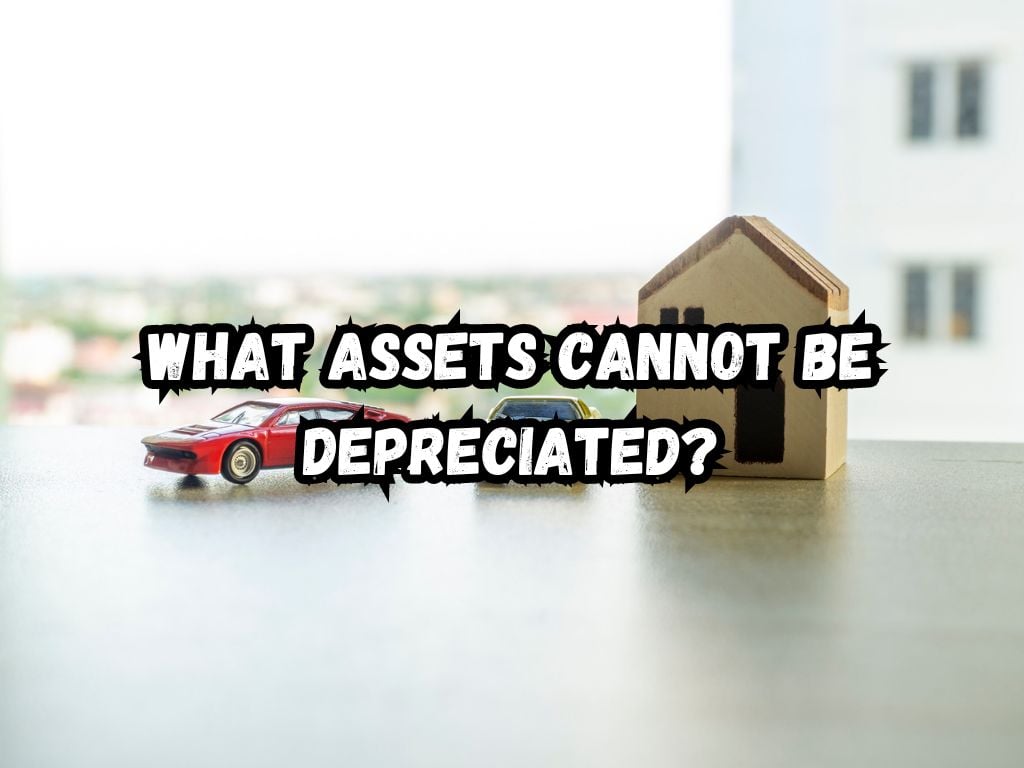In the realm of business and accounting, depreciation is a familiar term. It denotes the process through which a company allocates the cost of a tangible asset over its useful life. Understanding this concept is vital for anyone involved in financial management.
However, equally important is knowing about non-depreciable assets. These assets, not subject to the usual wear and tear, hold constant financial potential for a business.
This article dives into the essentials of what assets cannot be depreciated, providing clarity on which assets fall into this category and their impact on financial statements.
What Assets Cannot Be Depreciated?
Depreciation reflects the decrease in the value of a tangible asset over time. It’s an accounting method that helps in aligning the asset’s cost with the income it generates.
By spreading the expense over the asset’s lifespan, businesses can achieve a more accurate financial picture. This process affects the balance sheet and the income statement, touching upon a firm’s net income and asset value.

The Nature of Non-Depreciable Assets
Certain assets remain immune to the ticking clock of depreciation. The reason behind this immunity lies in their unique characteristics.
Non-depreciable assets encompass properties that either maintain or increase in value over time. Understanding this distinction is crucial for accurate financial reporting and investment decision-making.
List of Non-Depreciable Assets
Land
Land stands as the prime example of a non-depreciable asset. Unlike buildings or machinery, it does not wear out or get used up. Instead, the value of land often appreciates over time, making it a vital exception in the depreciation rule.
Intangible Assets
Intangible assets like goodwill, trademarks, and patents do not depreciate. They offer value over an indefinite period, although they may undergo amortization.
This process, similar to depreciation, spreads the cost of an intangible asset over its useful life, based on its expected contribution to future revenues.
Investments
Investments in stocks, bonds, and other securities also fall outside the depreciation domain.
These assets, representing ownership or loan to another entity, fluctuate in value based on market conditions rather than physical wear and tear.
Current Assets
Current assets such as cash, inventory, and receivables do not face depreciation. Their value and utility within the business cycle last for a short term, often less than a year, making depreciation an irrelevant concept for them.
Collectibles
Art, coins, and other collectibles are unique in their treatment. While they are tangible, their value can appreciate over time, placing them in the non-depreciable asset category.
Accounting Implications of Non-Depreciable Assets
The treatment of non-depreciable assets in accounting books is distinct. These assets enter the financial statements at their purchase price and may undergo adjustments for increases in market value.
Recognizing and reporting these assets correctly is vital for presenting a truthful financial condition of a business. Their presence can significantly affect a company’s valuation and perceived financial health.
Tax Implications of Non-Depreciable Assets
Understanding their unique tax implications is crucial when handling non-depreciable assets in tax calculations and filings.
Unlike depreciable assets, which can have their cost systematically allocated over their useful life, non-depreciable assets such as land and collectibles do not wear out or become obsolete.
The primary tax consideration for these assets comes into play when they are sold or otherwise disposed of, at which time capital gains tax may be incurred.
The capital gains tax is levied on the difference between the asset’s purchase price (its basis) and its selling price. For non-depreciable assets that appreciate in value, this tax can be significant.

It is thus essential to accurately assess the value of these assets at the time of acquisition and sale to precisely determine the capital gain and corresponding tax obligation.
It is also worth noting that long-term capital gains, realized on assets held for more than a year, are typically taxed at a lower rate than short-term gains, providing a tax advantage for holding non-depreciable assets over a longer duration.
Furthermore, certain non-depreciable assets, like collectibles, may be taxed at a higher rate than other assets, underscoring the importance of understanding specific tax treatments.
Unlike depreciable assets, which offer the opportunity to recover cost through depreciation deductions over time, non-depreciable assets do not provide such tax benefits during ownership.
However, strategic planning around the acquisition, holding period, and sale of these assets can offer tax advantages.
In sum, while non-depreciable assets do not afford the immediate tax deductions provided by their depreciable counterparts, strategic management and accurate valuation of these assets are key to optimizing tax outcomes, highlighting the critical nature of understanding their distinct tax treatment.
Pro Tips on Managing Non-Depreciable Assets
Handling non-depreciable assets requires strategic insight. Keeping precise records is fundamental. Monitoring market conditions and adjusting asset values in the books ensures that financial statements reflect the most accurate situation.
Companies should also consider the strategic benefits of investing in such assets, weighing their potential to appreciate against the need for liquidity.
Frequently Asked Questions
Can land ever be depreciated under certain circumstances?
No, land itself cannot depreciate as it does not diminish in utility over time. However, improvements on the land, like buildings, are subject to depreciation.
How do intangible assets differ from non-depreciable assets?
Intangible assets are a type of non-depreciable asset that doesn’t lose value through physical use but may be amortized based on their useful life to the company.
What’s the difference between amortization and depreciation?
Amortization and depreciation both spread out the cost of an asset over its useful life. However, amortization applies to intangible assets, while depreciation applies to tangible assets.
Conclusion
Grasping the concept of non-depreciable assets is critical for effective financial management and strategic planning. Whether it’s the enduring value of land or the brand strength carried by a trademark, these assets play a crucial part in a business’s financial narrative.
By understanding and appropriately managing non-depreciable assets, businesses can enhance their long-term financial health and strategic positioning.
By navigating through the complexities of non-depreciable assets, businesses and financial enthusiasts alike unlock a deeper understanding of asset valuation and strategic management.
This knowledge not only enhances financial clarity but also empowers strategic investment decisions, ensuring a well-rounded approach towards both tangible and intangible resources.


 Tags:
Tags:










